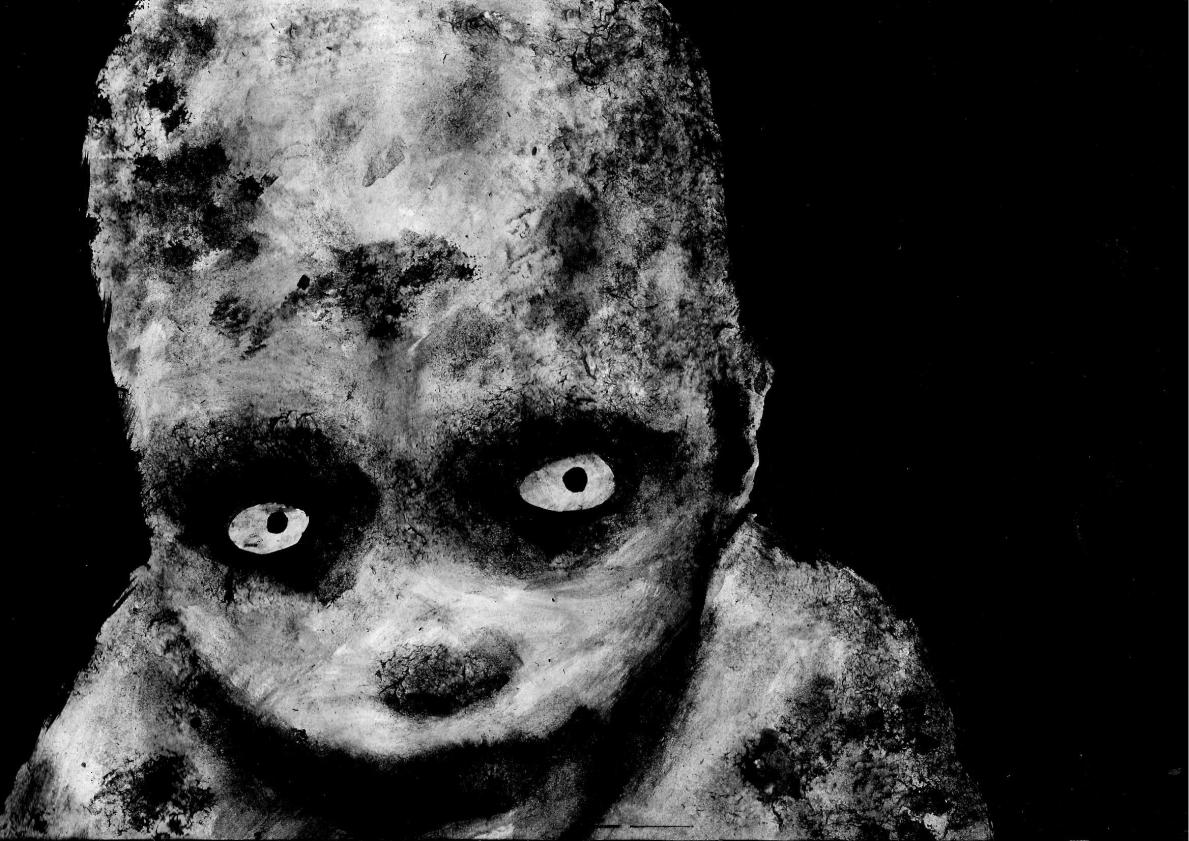Details
- 2013-02-18
- 0
- 204
- 2013
- Painting
- Ink
- Religion
Pricing
Price and availability not indicated

- SIN EATER -
Description by Mister 13
The eyes sucks (again). Ink, brush and kleenex on cardboard. The eyes sucks. A sin-eater is a traditional type of spiritual healer who uses a ritual to cleanse the dying of their sins. The sin-eater absorbs the sins of the people he or she serves and typically works for a fee. As the sins are usually consumed through food and drink, the sin-eater also gains a meal through the transaction. Sin-eaters are often outcasts, as the work may be considered unsavory and is usually thought to lead to an afterlife in hell due to carrying the unabsolved sins of others. The Roman Catholic Church regularly excommunicated sin-eaters when they were more common, not only because of the excessive sins they carried, but also because they infringed upon the territory of priests, who are supposed to administer Last Rites to the dying according to Church Doctrine. The sin-eater saves the dying not only from hell, but also from wandering the earth as a ghost - thereby performing a service for the living as well. In some traditions, sin-eaters perform their work for the moribund, while in others, the ritual takes place at the funeral. The sin-eater is usually associated with the British Isles, but there are analogous customs in other cultures as well. The 1926 book Funeral Customs by Bertram S. Puckle mentions the sin-eater: "Professor Evans of the Presbyterian College, Carmarthen, actually saw a sin-eater about the year 1825, who was then living near Llanwenog, Cardiganshire. Abhorred by the superstitious villagers as a thing unclean, the sin-eater cut himself off from all social intercourse with his fellow creatures by reason of the life he had chosen; he lived as a rule in a remote place by himself, and those who chanced to meet him avoided him as they would a leper. This unfortunate was held to be the associate of evil spirits, and given to witchcraft, incantations and unholy practices; only when a death took place did they seek him out, and when his purpose was accomplished they burned the wooden bowl and platter from which he had eaten the food handed across, or placed on the corpse for his consumption". Howlett mentions sin-eating as an old custom in Hereford, and thus describes the practice: 'The corpse being taken out of the house, and laid on a bier, a loaf of bread was given to the sin-eater over the corpse, also a maga-bowl of maple, full of beer. These consumed, a fee of sixpence was given him for the consideration of his taking upon himself the sins of the deceased, who, thus freed, would not walk after death.'" The 1911 Encyclopaedia Britannica states in its article on "sin eaters": "A symbolic survival of it (sin eating) was witnessed as recently as 1893 at Market Drayton, Shropshire. After a preliminary service had been held over the coffin in the house, a woman poured out a glass of wine for each bearer and handed it to him across the coffin with a 'funeral biscuit.' In Upper Bavaria sin-eating still survives: a corpse cake is placed on the breast of the dead and then eaten by the nearest relative, while in the Balkan peninsula a small bread image of the deceased is made and eaten by the survivors of the family. The Dutch doed-koecks or 'dead-cakes', marked with the initials of the deceased, introduced into America in the 17th century, were long given to the attendants at funerals in old New York. The 'burial-cakes' which are still made in parts of rural England, for example Lincolnshire and Cumberland, are almost certainly a relic of sin-eating".







